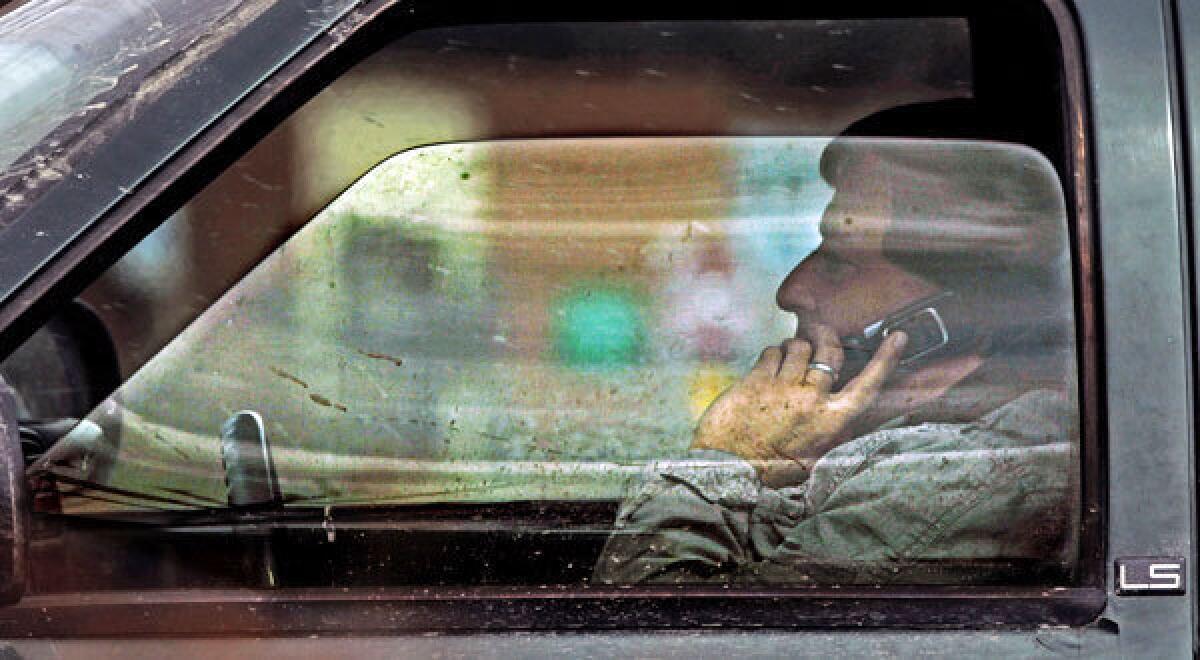L.A. Auto Show: Distracted driving stalls app integration into cars

- Share via
The push to bring technology into cars is a slow crawl for many automakers, particularly because of one wrenching issue that has come up in nearly every discussion at the L.A. Auto Show: distracted driving.
“It’s very important to get that phone in the center console and closed up,” Charles Koch, manager of new business development for American Honda Motor Co., said at the Connected Car Expo this week. But getting users to drop their smartphones means finding ways to fill dashboard screens with more apps -- maps, taking pictures and text messaging chief among them.
Toyota announced Wednesday the early fruits of its joint study with Microsoft into distracted driving as it prepared to show off its Driver Awareness Research Vehicle. The test vehicle uses gadgets such as Microsoft’s Kinect motion sensor and camera to study drivers while bringing information onto places such as side windows and console screens.
PHOTOS: L.A. Auto Show model debuts
“We need to start thinking of the car and the driver as teammates, sharing the common goal of saving lives,” Chuck Gulash, director of Toyota’s Collaborative Safety Research Center, said in a statement. “Together, the teammates are building a common situational awareness of their driving environment.”
Toyota has also funded research at MIT, where tools such as voice command interfaces and Google Glass are being investigated. The researchers found voice commands aren’t very taxing on the mind, but older people unnecessarily stared at the screen when issuing oral commands.
The MIT study also recorded that the same people likely to use their smartphones will probably spend excessive time fiddling with the radio, picking up a drink or doing their makeup, Bruce Mehler, research scientist at MIT’s AgeLab and New England University Transportation Center, told auto show attendees.
FULL COVERAGE: L.A. Auto Show 2013
The problem of distracted driving has continued to expand in recent years as the usage of smartphones spreads to older generations.
About 3,300, or 10%, of vehicle-related deaths each of the last two years have involved distracted driving, according to data released this month by the National Highway Traffic Safety Administration. In 2012, injuries from distracted driving crashes resulted in more than 400,000 injuries, equal to the population of Oakland.
And the rise in distracted driving has slowed the broader trend during the last decade of diminishing number of vehicle-related deaths.
The highway safety administration now recommends that car electronics don’t distract a driver for more than two seconds at a time or 12 seconds during a series of glances.
A study released Tuesday by the tracking firm Nielsen found that Amazon.com is one of the top websites visited when connected to Bluetooth in cars. Such browsing activities probably take longer glances than recommended by safety regulators.
Ford Motor Co. Executive Vice President Jim Farley said the situation had reached “a tipping point” and that app makers needed to budge from demands that experiences are identical across platforms.
“They want to impose their user interfaces,” he said of tech companies and their apps. “In reality, they have to offer it in a condition that doesn’t compromise the performance of the car. “
So testing and perfecting apps for in-dashboard use is becoming more important. But efforts to reach a common standard, so that developers don’t have to build a different version for every vehicle are just getting off the ground.
One example has Airbiquity acting as middleman between app makers such as Facebook and iHeart Radio and car companies such as Nissan. Airbiquity customizes apps for cars. Carmakers choose which of them to allow in their systems and how much functionality they should have.
An industry group, the Car Connectivity Consortium, has launched an open-standard approach known as MirrorLink. It should bring apps to Volkswagen’s 2014 models, for example. This week, MirrorLink released a standard that app developers could follow.
“What we’re trying to do is harmonize all this research about distracted driving from nebulous guidelines to concrete -- minimum font sizes, colors, no scrolling text,” said Alan Ewing, the consortium’s executive director.
Automakers do recognize the research needs to happen as quick as possible.
“In today’s world, what happens, your navigation is locked when you start driving,” said Mitch Bainwol, Chief Executive of the Alliance of Automobile Manufacturers. “What does the human being do? Pull out their phone and look down.”







